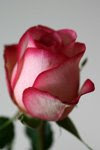I have browsed your site and found it very
informative.I am an aromatherapist from Mumbai,India.I
would like to have your guidence regarding
pigmentation,BPH (enlarged prostate),and
Impotency.Kindly let me know effective formula
(recipe) and how to use the same.
It's great to know that there are vistors all over the world interested in aromatherapy!
Darkening of the skin, called hyperpigmentation, can occur because of age, sun exposure, or because of hormone fluctuations. The best defence is to avoid tanning and over exposure to the sun, and to wear sunscreen. I do not know of essential oils that may be effective for reducing hyperpigmentation. However, certain essential oils, especially bergapten-containing bergamot, may be very phototoxic and can cause severe hyperpigmentation when they are used on skin that is then exposed to sunlight. To avoid more hyperpigmentation, potentially phototoxic essential oils should be used carefully or not at all.
For enlarged prostate, I am not aware of aromatherapy remedies that are well-known to be effective. The herb Saw Palmetto has been shown helpful for many men who experience benign enlargement of the prostate that occurs with age.
Because impotence (erectile dysfunction) can have different causes ranging from emotional to physical, it is difficult to give general suggestions for how aromatherapy might be useful. For impotence that is caused wholly or in part by anxiety, aromatherapy may help induce relaxation. Ylang ylang is particularly helpful because it is both an aphrodisiac and emotionally soothing. Sandalwood and Atlas cedarwood essential oils may have similar effects. A full body massage using the following blend may be helpful to soothe anxiety:
- 4 drops ylang ylang essential oil
- 5 drops sandalwood essential oil
- 5 drops Atlas cedarwood essential oil
- 2 ounces sweet almond oil
- Aromatherapy for Sexual & Reproductive Problems
- Understanding Erectile Dysfunction (see the Alternative Medicine section)

